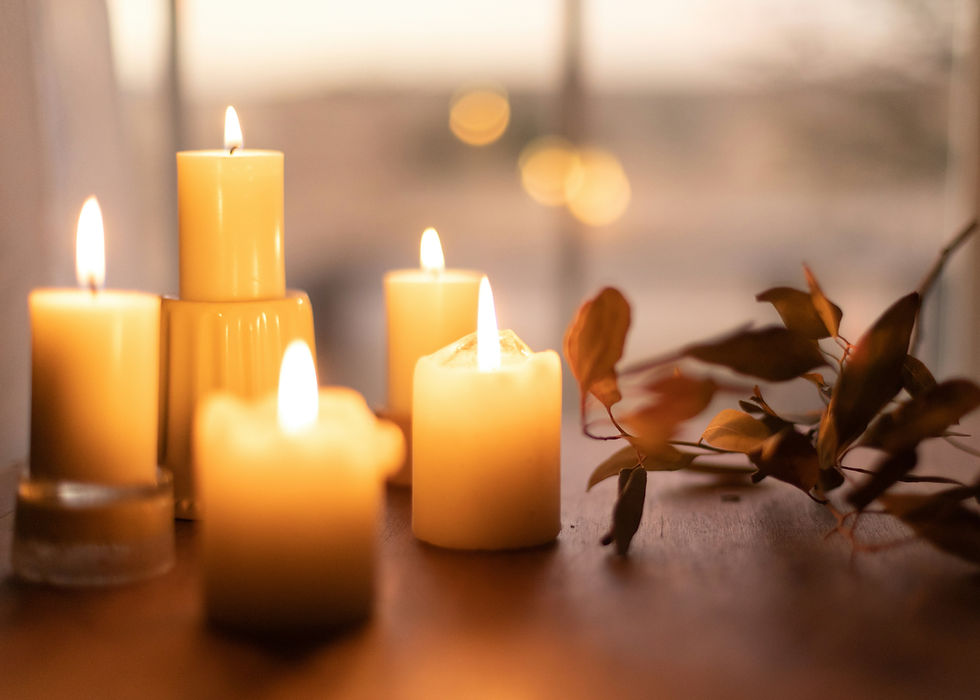You can’t create a calm space with your teenager until you can get access to your own calm; Attuning to safety in your body.
- Lori K Walters
- Dec 17, 2024
- 5 min read

The first time I was told to ‘listen to my body’, I was confused. It sounded so basic and self-explanatory, like something everyone knows how to do.
But I wasn’t even sure what it meant.
I was 23 and I was all in my head. As far as I knew, that’s where all my wisdom resided. Even things related to the care of my body were in my head — how many minutes to devote to trail running (whether my knees felt good or not), how many calories to consume (whether I was hungry or not), what kind of jeans to buy (whether they fit comfortably or not) and how many hours to sleep (whether my body needed more or less).
I’m not alone, am I?
Have you ever found it easier to override your own needs and preferences and respond ever-so-quickly to the requests and inclinations of others? Put self-care at the bottom of your priority list because it just didn’t seem urgent?
Do you push yourself to accomplish something that ‘needs to get done’, even though you feel completely drained?
Do you feel like your mind can never turn off and holds you captive up there? Has your body spoken to you, through pain, illness, warnings or whispers, only to be ignored?
Here’s what happens next:
When you repeatedly dismiss your body’s communications, tension builds. (And I’m not talking about the temporary kind.)
And when tension and over-thinking settle in to stay, you are so focused on those problems that you dismiss more of your body’s messages and, gradually, it becomes difficult to hear them at all.
~
You won’t be surprised to hear that many of the parents I work with arrive in a state of worry and tension. This is inherent in parenting teens and young adults, right?
You may, however, not know that most of them began their change process by learning to listen to their bodies.
Why?
Because you can’t radiate calm to your young adult child in tense moments until you’re able to get access to your own calm.
You can’t express your needs effectively until you can feel them in your gut and engage your authentic voice to represent them in conversations.
You can’t be honest about your emotions until you’re able to experience the sensations of emotions in your body.
You can’t connect with what your child is really communicating until you develop sensitivity to the subtle energies.
You can’t create an environment that’s comfortable for sharing until you can feel ease and openness yourself.
Anxiousness is the absence of a felt sense of safety
When tension, worry and agitation have become your ‘normal’, it’s difficult to sense what safety truly feels like in your body. “Un-safety” in our bodies can be loud. Sharp pains warning of peril, bracing for the threat to hit, leaning away from risk, clenching with vulnerability, breath-holding, etc.
And safety is often quiet.
I invite you to pause and consider what those quiet communications from your body might be.
What does safety feel like in your breath? Maybe an easy expanding and contracting that says, “I’m safe. I can be here.”
What happens in your muscles and bones that says, “I can stay here”? Lengthening, relaxing, surrendering to gravity.
How does your body invite your full presence? What part of you says, “I can be here now. Right now. Really here.”?
This is your body signaling safety to you.
Friends, these cues are important to know because, when you allow yourself to register subtle shifts in your body, they become more familiar. And when they become more familiar, they become more ‘accessible’ to you when you need them. Like when you’re feeling unsafe in an argument or when you feel like you’ll be risking the whole relationship if you say what’s true for you.
Start by attuning to the ‘safe’ and ‘not safe’ sensations. It’s not that you have to be hyper-focused on your body and respond to its every cue; it’s better to be able to hear your deep, honest, full-bodied Yes and No. The truth from your core.
Trying to get rid of anxiousness?
In my experience, trying to get rid of anxiousness causes more anxiousness. When I realize I’m anxious, I immediately feel embarrassment or annoyance with myself and start seeking a solution to make it go away. And if I push to get myself into a better state, I cause myself more agitation.
A somatic practitioner showed me another way to look at this and I invite you to try it right now, if you’re willing.
Get into a comfortable position. Take a few gentle breaths until you feel present. Tune into your body. First, recreate a state of anxiousness. Feel the straining neck, pounding chest or writhing belly and notice that urge to eliminate it. Then, track what happens inside when you ask, “What else could be possible for me?” Sit with the question.
What comes up — curiosity? Hope? Something else? If you get a taste of what that would feel like, allow yourself to linger with that feeling for a moment.
That’s listening to your body.
You know, when we’re so focused on getting rid of our pain and finding the one solution to our anxiousness that will restore our lives to peace and joy, it’s easy to forget that we live in a big wide world of mysteries and to stay open to what else is possible for us.
We forget that ease, pleasure, connection and safety can be experienced alongside overwhelm and anxiety. We forget that we can claim/ create more time and space and bring more of what nourishes us into our lives.
Just asking the question, “What else is possible for me?” reminds your body that there are indeed options.
And that can shift you from powerlessness to agency and autonomy.
We all know that, when you feel like you have no resources, tools or understanding about what’s going inside you, healing and evolving seem impossible.
It’s also frustrating when you have piles of information but no clear process on what to do with it, how different tools apply to your unique body and how to gradually integrate calmness into your system.
As I said, this is often the first work that a parent engages in with me. Information about calmness isn’t that helpful to them until they have tangible, personalized tools and weekly experiential learning that weave the information into their own, unique systems. Attuning to safety in your body - that’s what matters when a sweaty, ranting teenager stomps through their kitchen.
Tuning in to the quiet cues of your body might seem like it’s a long way from parenting young adults but it’s an essential skill and a muscle we can all develop.
It transports you to a place where you have choices about how you respond to your big kid while staying connected to yourself and what matters to you.
You gain more options as to how you express your emotions and needs so that they can be heard and honoured.
You gain a broader perspective of all the possibilities that exist for sensing and working with the energy between the two of you as you create a loving and accepting space.
A safe place to be together.
Subscribe to Peace in My Parenting.
Photo by Miguel Bandeira on Unsplash




